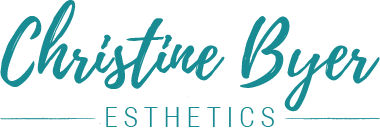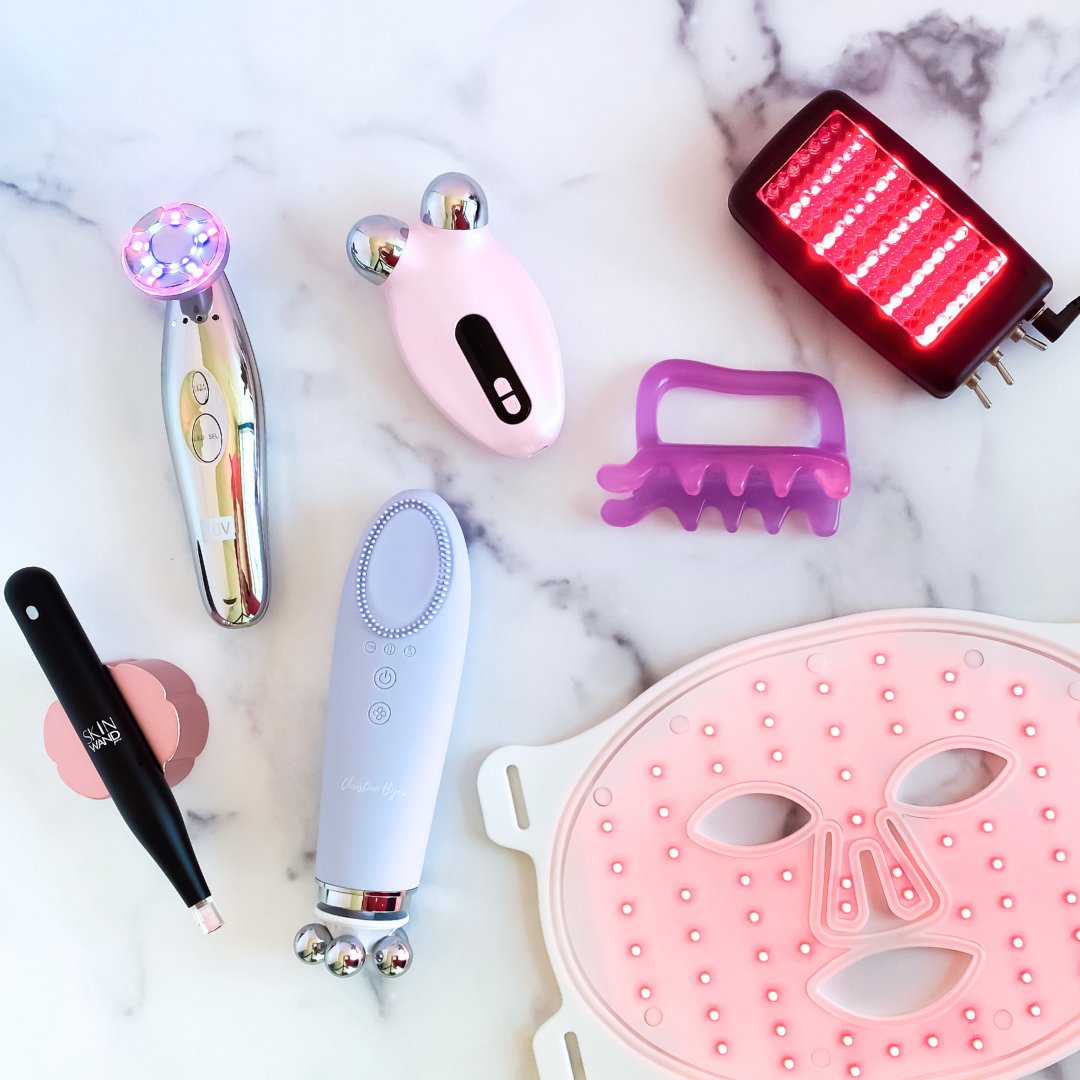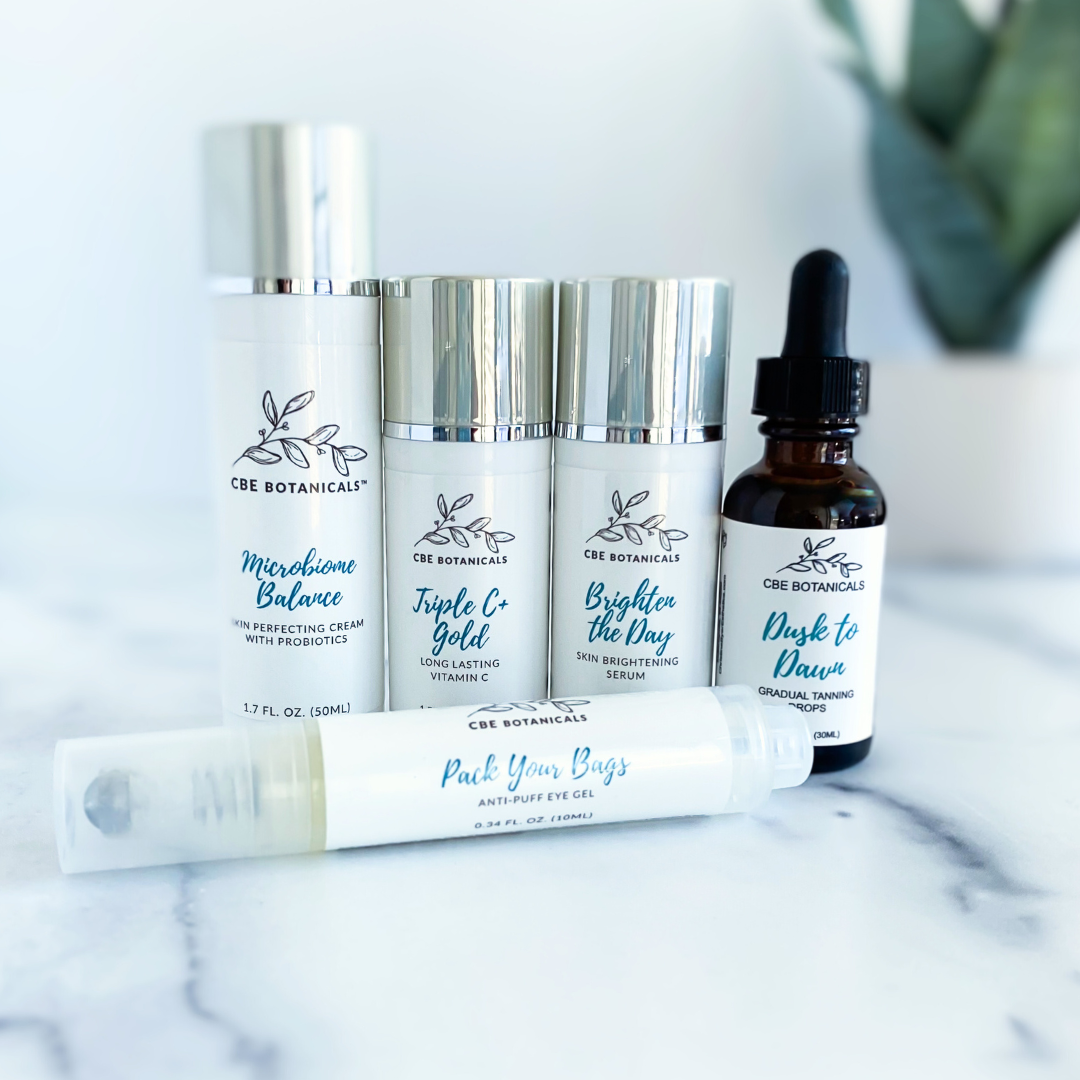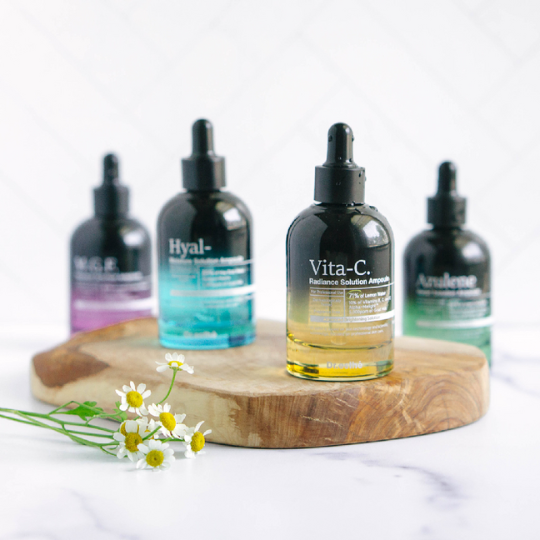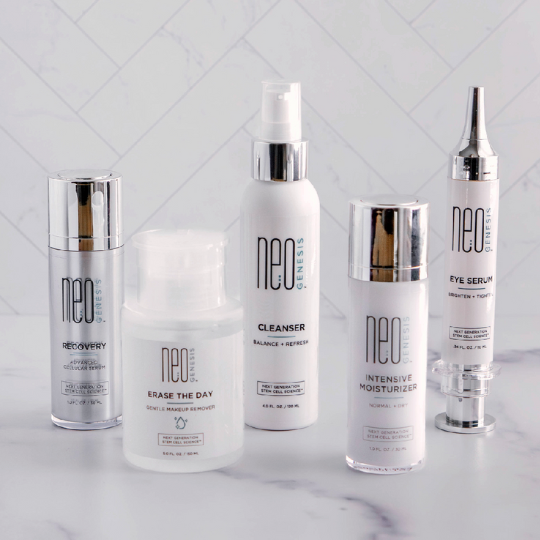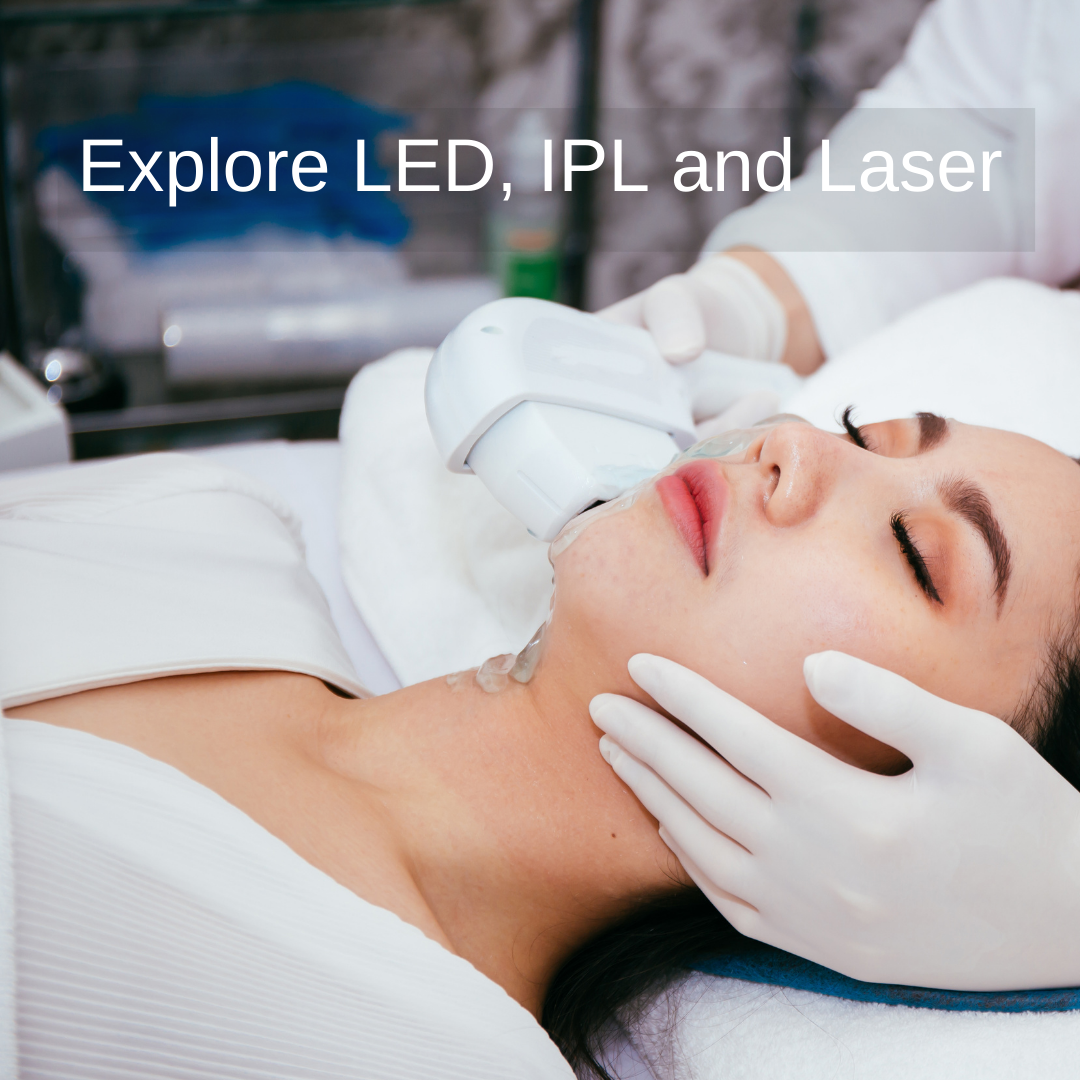There is a variety of modalities available for use in modern esthetics. It can be confusing and if you’re not informed this can lead to misuse or failure to use the correct modality for your needs. Proper use and selection will avoid adverse or counter-productive results and save you time and money.
In this article, we will explore 3 types of light therapy (LED, IPL & Laser). I will share what each light therapy does and explain the main uses for each. This is not an exhaustive article but contains the basics so you can talk intelligently with an esthetician for services or when you’re shopping for a device.
LED is the acronym of Light Emitting Diode which is a computer chip encased in a glass-like resin. It emits therapeutic wavelengths (or colors) of light energy. Light emitted by LED consists of 4 visible colors and one invisible (to the eye) color called infrared. This is different than the single light beam generated by the Laser that is monochromatic. More on that later. Let’s begin with LED.
When light energy is in the correct wavelength, the cells in the dermis layer of skin will convert it into ATP (adenosine triphosphate), which is the fuel cells need to function. The fibroblast cells in the dermis layer is where collagen is produced. Collagen gives the skin fullness (that plumped look) and elastin gives the skin the ability to bounce back. LED re-energizes these fibroblast cells which results in an increase in collagen and elastin.
LED light therapy will produce different results based on the color of LED along the spectrum. The color is measured in nanometers (nm) and the color will also determine the penetration level of LED light. The effective ranges for LED light therapy is 400-450 nm (blue), 500 – 550 nm (green), 570-600 nm (yellow/amber), 650-750 nm (red), to 850 – 900 nm (infrared). This will fluctuate a little depending on the device. Those within this range will be effective when used properly.
Fun Fact: LED is not Ultraviolet light.
The spectrum image below shows the depth of light penetration for each color.

Uses for LED include:
NOTE: All LED colors help stimulate collagen & elastin and as such with continued use will tighten skin and improve skin tone and texture. Studies are showing that combination LED light therapy is more beneficial than one color for use in anti-aging. Reports and studies have not been unanimous on the need for eye protection for the blue, green, yellow and red spectrum. I’d prefer to err on the side of safety and recommend eye protection.
- Blue LED Light
- works by killing propionibacterium acnes, the bacteria living below the surface of the skin and is responsible for some acne,
- can be used to improve skin texture and reduce sebaceous hyperplasia or enlarged oil glands,
- is a nice compliment for combination Light therapy,
- penetrates into the Epidermis up to 1mm.
- Green LED Light
- absorbed into the skin has a calming effect,
- helps to lighten hyper-pigmentation spots revealing a brighter complexion,
- can be used to treat dilated capillaries,
- sagging skin around the eyes,
- under-eye circles,
- sunspots,
- is a nice compliment for combination Light therapy,
- penetrates into the Epidermis up to 3mm.
- Yellow LED Light
- can increase wound healing,
- reduce redness by increasing dermal blood flow,
- it’s effective for helping Rosacea,
- is a nice compliment for combination Light therapy,
- penetrates into the Papillary Dermis up to 4mm.
- Red LED light
- reduces inflammation while improving circulation,
- promotes faster wound healing on slow-healing wounds like diabetic ulcers,
- heal sun damage,
- reduce reoccurrence of cold sores from herpes simplex virus,
- diminish scars,
- relieve pain and inflammation,
- reduce psoriasis lesions,
- is a nice compliment for combination Light therapy,
- and the list goes on and is too long to list here,
- penetrates into the Adnexa Dermis 5-6mm.
- Infrared LED light
- penetrates the deepest and works to tighten skin,
- reduces nerve inflammation,
- is excellent for wound healing,
- and the list goes on and is too long to list here,
- is a nice compliment for combination Light therapy,
- penetrates into the Dermis up to 8mm.
How often should LED Light Therapy be used?
It is recommended to start with a commitment of 15 minutes for entire face, at least 3-5 times per week for the first 1-4 weeks. As you begin to see results, you can reduce the number of times per week by one day each week thereafter. Everyone reacts differently since there are many factors involved in good skincare so this time will vary. For most, best results are achieved over an 8 – 12 week period.
Contraindications to LED light therapy are few. It is not recommended for those with a light sensitivity disorder such as porphyria.
If you have any medical condition, you should consult your healthcare provider before starting the use of any skincare device or light therapy. Stop the use of any light therapy is you experience swelling in the area of treatment.
Let’s Explore IPL Light Therapy
IPL is Intense Pulsed Light (a.k.a. photo rejuvenation)

The light from IPL is more scattered and less focused than a laser. IPL penetrates down to the second layer of your skin (dermis) without harming the top layer (epidermis), so it causes less damage to your skin. The IPL pulses can sting your skin like that of a rubber band snap.
IPL is similar to laser treatment. However, a laser focuses just one wavelength of light at your skin, while IPL releases light of many different wavelengths, like a photo flash.
Pigment cells in your skin absorb the light energy, which is converted into heat. Unlike LED that does not produce any significant heat. The heat destroys the unwanted pigment to clear up freckles and other spots. Or, it destroys the hair follicle to prevent the hair from growing again.
IPL devices use multiple wavelengths of light to treat sun-induced changes on the face, including brown pigmentation, age spots, and broken blood vessels. IPL is also used to treat the facial changes of rosacea, including redness and broken blood vessels. IPL may be used for these changes on the hands, neck, and chest as well. It is safe, non-invasive, and is tailored to the individual patient’s skin.
IPL will also treat:
- age spots
- sun damage
- freckles
- birthmarks
- varicose veins
- broken blood vessels on your face
- rosacea
- hair on your face, neck, back, chest, legs, underarms, or bikini line
How often should you get IPL?
For removing pigmentation issues, you may need to have 3 to 6 treatments spaced about 1 month apart giving your skin time to heal. Hair removal requires 6 to 12 treatments. For hair removal, IPL works better on thick, dark hair than on fine, light hair. You may need to have several treatments to achieve your desired result.
Prior to treatment, you should avoid:
- direct sunlight
- tanning beds
- waxing
- chemical peels
- collagen injections
- drugs that increase your bleeding risks, such as aspirin and ibuprofen
- creams or other products that contain vitamin A, such as RetinA, or glycolic acid
Let’s Explore Laser Light Therapy
Laser is the abbreviated term used for Light Amplification by Stimulated Emission of Radiation.
A laser device produces high-energy, focused beams of intense, single-colored light and heat, which have been found to selectively interact with certain skin tissues. This can range from gentle to more aggressive treatments.
A variety of Laser treatments are deep carbon dioxide (CO2) lasers, fractional CO2 lasers, vascular lasers (for rosacea) such as the Excel V laser, and lasers for scar removal.
IMPORTANT: Because skin reaction can vary, to avoid adverse reactions, always choose an experienced technician who knows how to choose the best treatment for your skin type, condition, etc. Always, ask for references and verifiable before and after results.
The two most common types of resurfacing lasers are Carbon dioxide (CO2) which is an ablative laser. This type of laser is used to treat wrinkles, scars, warts and other conditions. Erbium C02 laser: This type of laser is used to remove superficial and moderately deep lines and wrinkles on the face, hands, neck, and chest. Both types of ablative lasers remove outside layers of the skin.
Fun Fact: This is different than fibroblast therapy. Fibroblast merely injures the skin in the tiny pin-point dots caused by the plasma arc of the plasma pen device administered by a trained professional.
The newest version of CO2 laser resurfacing (fractionated CO2) uses very short pulsed light energy (known as ultra pulse) or continuous light beams that are delivered in a scanning pattern to remove thin layers of skin with minimal heat damage. Recovery takes up to two weeks.
Non-ablative lasers, on the other hand, don’t remove any skin layers. These include pulsed light (single beam pulsed in one location), pulsed-dye lasers, and fractional lasers. Non-ablative lasers may be used for rosacea, spider veins, and acne-related skin concerns. Again, using a seasoned trained professional is the key to avoiding adverse results.
Laser skin resurfacing can treat:
- age spots
- scars
- acne scars
- fine lines and wrinkles
- crow’s feet
- sagging skin
- uneven skin tone
- enlarged oil glands
- warts
According to the American Board of Costmetic Surgeons (ABCS), darker skin can receive a laser treatment BUT the key is choosing a practitioner who knows which laser works best for darker skin tones.
Healing usually takes between 3 and 10 days. As a general rule, the bigger the treatment area and the deeper the laser, the longer the recovery time. Recovery from ablative laser treatment, for example, may take up to three weeks. During recovery, your skin may be extremely red and scab over.
To prepare for laser treatments (based on medical advice):
- Avoid tanning or heavy sun exposure and use a broad-spectrum sunscreen daily for 4 weeks prior to treatment.
- Avoid deep facial peel procedures for 4 weeks prior to the treatment (for example, aggressive chemical peels, laser resurfacing, dermabrasion).
- Do not use medications that cause photosensitivity (such as doxycycline, minocycline) for at least 72 hours prior to treatment.
- If you have a history of herpes (oral cold sores, genital) or shingles in the treatment area, let your doctor know and start your antiviral medication (valacyclovir, acyclovir) as directed (usually 2 days prior to treatment and continue for 3 days after treatment).
- Laser resurfacing should not be done with active acne or excessive skin sagging.
Many options are available to help us age gracefully. Always do your research and educate yourself so you can make informed decisions for greater peace of mind.
————————————————————-
Want to get support for finding products and treatments right for your skin? Join us at the Christine Byer Beauty Club. We offer a 14-Day FREE Preview with full access to everything in the Club. Ask Christine questions and have access to savings and the opportunity to win a FREE consultation. If you don’t find value in your membership, cancel within the 14 days at no charge. We think for 3 cents a day it’s a phenomenal deal.
